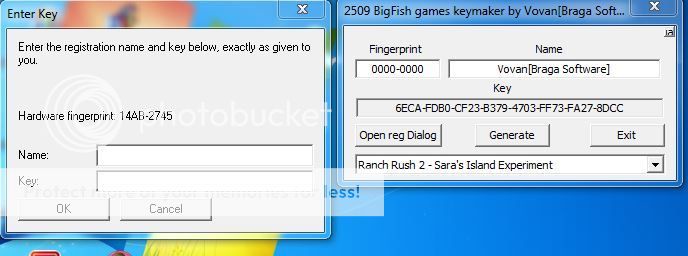
Aac Files In Adobe Audition
Nov 17, 2017 - Using Adobe Audition on Mac. Click on the open folder icon under “Files” in the left hand corner and navigate to the file you wish to open for transcoding. Next select the open.wav file and navigate to File->Export. Select File and a new “Export File” window will open. In the Format drop down Select “Apple Audio.
MP3 is now a distribution standard. ITunes has sold over a billion compressed audio tracks in AAC format. DVDs, Blu-ray Discs and digital TV all use audio compression. Besides these, many other compression formats are available to the video producer.
Some use lossy compression like MP3 and others are “lossless.” The trick is determining which are useful or even practical. This month, we’ll compare the major players and see how they fit in the production process. Lossy Formats The January 2008 issue of Videomaker has an on lossy audio compression. Here’s the thumbnail version: Lossy compression discards audio data based on a model of human hearing. Using some fancy math, the encoders can dramatically reduce the size of the file with a minimum of audible impact.
What follows is a brief outline of popular lossy formats. What we call MP3 is actually short for MPEG-1, Audio Layer 3 encoding. It is one of three audio compression methods designed for MPEG-1 video streams. Conveniently, the system also works without video and became popular for distributing and playing CD audio tracks in the late 1990s.
The quality of MP3-encoded audio has been the subject of great debate over the years. Early encoders produced poor-quality files, but modern encoders can sound quite good. The Fraunhofer encoder is the de facto standard included in mainstream audio applications like and Apple’s iTunes. Many people currently regard the LAME open-source encoder as the highest-quality MP3 encoder, but the title isn’t permanent.
There is also an MP3 variant called MP3Pro, but so far it hasn’t gained mainstream acceptance. MP2 is a lossy compression method originally designed for digital broadcasting. As a sort of predecessor to MP3, it requires slightly higher bitrates for encoding, but it is quite reliable as a streaming format. In fact, much of the music you hear on analog radio is encoded with MP2. Remote production and satellite feeds often use the MP2 format. Good luck finding a portable player that reads MP2 files. We can’t forget the MPEG-4 format and AAC, Advanced Audio Coding.
AAC is the format of choice for Apple’s iTunes store and the venerable iPod. Playstation 3 and Wii game consoles, along with some digital radio services, also use AAC. On paper, AAC is dramatically better than MP3, with greater flexibility and careful attention paid to various encoding options. In the real world, consumers seem more interested in compatibility and, given similar sound quality, prefer an audio format that works on their existing devices. Apple has certainly sold a ton of AAC tracks, but they’re not widely used in other applications.

Microsoft has its own proprietary format with Windows Media Audio or WMA files. WMA sounds great and is quite flexible but, like AAC, hasn’t gained widespread acceptance in hardware or software circles.
The final lossy format is Ogg Vorbis. The name may sound funny, but many audio experts believe that Ogg files sound better than other lossy formats at similar bitrates.  Ogg Vorbis is deeply rooted in the open-source software movement, and there are no licensing fees or other purchases necessary to use the compression method.
Ogg Vorbis is deeply rooted in the open-source software movement, and there are no licensing fees or other purchases necessary to use the compression method.
While not exactly mainstream, Ogg Vorbis continues to gain ground in software acceptance, and there are a few hardware players that support the format. This is a format to watch. Lossless Formats If you’ve downloaded much from the internet, you’re familiar with Zip files. These files contain one or more other files, bundled together and squeezed for absolute minimum file size.
Agxnbwug 27.09.18 10:52 kate sleeping with drunk monk ahahahaha,,,,,,,,,,,,,,,,,,,,,,,,,,,,,,,,,,,,,,,,,,,,,. Lykyjcbe 27.09.18 10:51 botmaster asshole patamusho,,,,,,,,,,,,,,,,,,,,,,,,,,,,,,,,,,,,,,,. Qvxtdxwd 27.09.18 10:53 super love pictures blevotny,,,,,,,,,,,,,,,,,,,,,,,,,,,,,,,,,,,,,,,,,,,,,,. Grafik dezhurstva po klassu shablon.
The magic happens when you unzip them – all the files reassemble perfectly in the original form. That’s the way lossless audio compression works. Audio files are fairly large, with an average song taking up 30-50MB of storage. Lossless encoders strip out the redundant data, silence and anything else they can find.
Then, they make a list of what they extracted and create a new, smaller version of the file. While a lossy encoder might achieve a compression ratio of 10:1, lossless encoding is typically 50-75% of the original file size. This may not seem like a serious reduction, but it’s convenient for archiving and collaborating over the internet, with a complete, perfect copy of the original material. There are several lossless compressors on the market.
The one everyone’s talking about is FLAC (Free Lossless Audio Codec). Another open-source project, FLAC is supported in several popular audio and video applications, with more on the way. FLAC can use multiple bitrates and sampling depths and will squeeze up to eight channels in a single file. WavPack uses different methods with similar results, including the option to create a “lossy” version of the file for immediate playback. Unfortunately, the production world does not widely support WavPack, but this could change. Monkey’s Audio lossless APE format isn’t as full-featured as FLAC or WavPack, but it produces similar results. Support is limited for this newcomer.